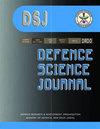GPS Receiver Simplification for Low cost Applications and Multipath Mitigation Analysis on SDR based Re configurable Software Receiver
IF 0.8
4区 工程技术
Q3 MULTIDISCIPLINARY SCIENCES
引用次数: 0
Abstract
Many modern position-based applications rely heavily on the Global Navigation Satellite System (GNSS). Most applications require precise position data obtained through sophisticated hardware with a high computational capacity in the receiver. Some cost-effective applications may not require precise position data and require less complex signal processing. The use of efficient hardware and signal processing techniques to reduce the overall cost of a GNSS receiver is an active research topic. This paper considers Global Positioning System (GPS) constellation and proposes two factors to reduce the receiver complexity: sampling frequency and the number of tracking channels. A Keysight GNSS signal generator to record GPS signals, a Software Defined Radio board and a software-based GPS receiver are used in the experimentation. The sampling frequencies are 40, 20, 10 and 5 MHz considered, and tracking channels are reduced from 12 to 6 and then 4. The increase of error in the receiver position with 6 and 4 satellites is considerably small, but the number of tracking channels and signal processing requirements are reduced considerably. The GPS signals are affected by many errors; one of the significant sources of error is multipath propagation. Three distinct GPS multipath scenarios are generated for four satellite signal combinations with the GNSS simulator for the receiver performance analysis. Three multipath mitigation techniques, namely Early Minus Late (EML), Narrow correlator (NC) and strobe correlator (SC) methods, are considered because of their simple structure and fewer signal processing requirements. The error reductions of three multipath scenarios are compared, and the SC method performs better in all three multipath scenarios.面向低成本应用的GPS接收机简化及基于SDR可重构软件接收机的多径抑制分析
许多现代基于位置的应用严重依赖全球导航卫星系统(GNSS)。大多数应用需要通过接收器中具有高计算能力的复杂硬件获得精确的位置数据。一些具有成本效益的应用可能不需要精确的位置数据,也不需要复杂的信号处理。利用高效的硬件和信号处理技术来降低GNSS接收机的总体成本是一个活跃的研究课题。本文以全球定位系统(GPS)星座为研究对象,提出了降低接收机复杂度的两个因素:采样频率和跟踪信道数。实验中使用了Keysight GNSS信号发生器、软件无线电板和基于软件的GPS接收机。采样频率分别为40mhz、20mhz、10mhz和5mhz,跟踪通道由12个减少到6个,再减少到4个。6星和4星的接收机位置误差增加很小,但跟踪信道数量和信号处理要求都大大减少。GPS信号受多种误差的影响;一个重要的误差来源是多路径传播。利用GNSS模拟器对四种卫星信号组合生成了三种不同的GPS多路径方案,用于接收机性能分析。考虑了三种多径缓解技术,即早减晚(EML)、窄相关(NC)和频闪相关(SC)方法,因为它们结构简单,信号处理要求低。比较了三种多路径场景的误差减少,SC方法在三种多路径场景下都表现得更好。
本文章由计算机程序翻译,如有差异,请以英文原文为准。
求助全文
约1分钟内获得全文
求助全文
来源期刊

Defence Science Journal
综合性期刊-综合性期刊
CiteScore
1.80
自引率
11.10%
发文量
69
审稿时长
7.5 months
期刊介绍:
Defence Science Journal is a peer-reviewed, multidisciplinary research journal in the area of defence science and technology. Journal feature recent progresses made in the field of defence/military support system and new findings/breakthroughs, etc. Major subject fields covered include: aeronautics, armaments, combat vehicles and engineering, biomedical sciences, computer sciences, electronics, material sciences, missiles, naval systems, etc.
 求助内容:
求助内容: 应助结果提醒方式:
应助结果提醒方式:


